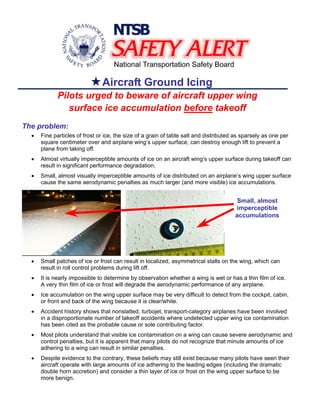Small, almost imperceptible amounts of ice on the upper surface of an aircraft's wing can significantly degrade performance and cause potential loss of control during takeoff. Pilots are urged to thoroughly inspect the entire wing surface, including tactile inspection, to ensure no ice, frost or snow accumulation before takeoff. Even minute amounts of upper wing surface contamination that are difficult to detect visually can reduce stall margins and should not be considered safe for takeoff.

